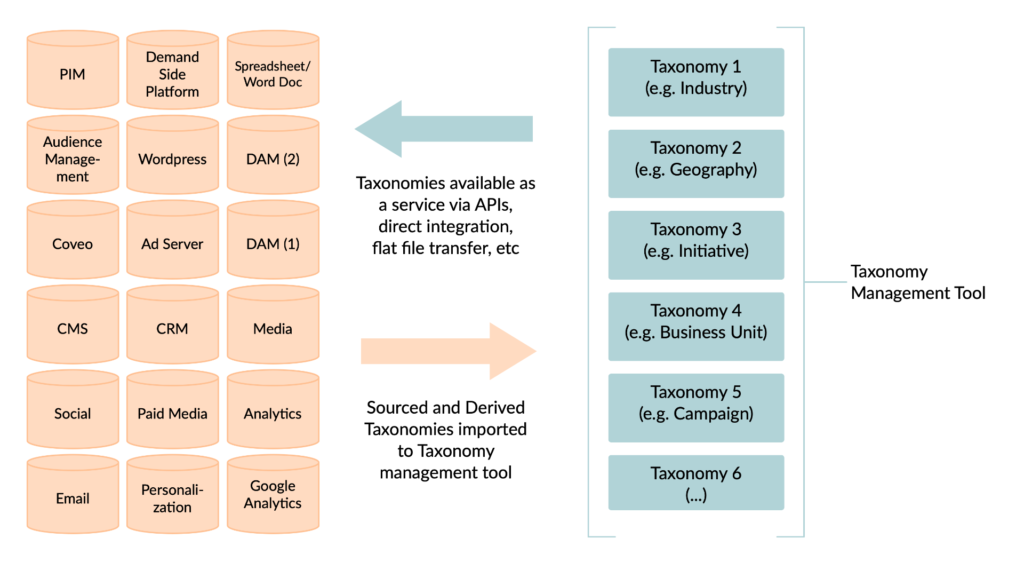Challenge:
Senior executives from our client’s marketing division—who were tasked with managing a multi-billion dollar marketing budget—wanted to know how marketing campaigns were performing relative to business goals across web, paid media, search engine marketing, and social media channels. But they were unable to make use of the information in their tangled web of marketing systems.
Approach:
Factor facilitated workshops with stakeholders from marketing, technology, and finance teams—which were operating in silos—to gain a holistic understanding of the company’s marketing information (content, metadata, taxonomies) and technologies.
Discoveries:
- Significant redundancy, overlap, and incongruity among marketing taxonomies. These redundancies were invisible to the mostly-autonomous business units. (Example: One group defined marketing campaigns as units of marketing initiatives while another designated marketing initiatives as units of marketing campaigns.)
- Hesitancy and fear of disruption–especially around “functioning systems.”
Solution:
- Educated stakeholders about information architecture, strategy, and governance. The more thoroughly employees understand IA and how it will help them and the business, the more likely they are to support and tolerate necessary disruptions for the sake of better long-term efficiency.
- Mapped and diagrammed the existing state of the client’s nineteen marketing taxonomies, and their relationships to each other. One stakeholder remarked that the diagram looked like “a tangled bowl of spaghetti.”
- Developed a model for campaign taxonomies, along with a governance and implementation plan to unify and reconcile redundant taxonomies.

Returns:
- Enabled real-time visibility into the success (or failure) of marketing campaigns – when campaigns underperform in-market at multi-billion dollar per-year scale, it can cost tens of millions of dollars in a single fiscal quarter.
- Helped the company shift from a widely distributed set of twenty-six information assets to a streamlined model of “Taxonomy As A Service.”
- Heightened employee efficiency—no more need for multiple teams to manually track down and calibrate data.
- Newly-gleaned information allowed the client to fine-tune its marketing campaigns to target customers.
- Client expanded Factor engagement beyond marketing to projects such as improving search functionality on the company’s website.

